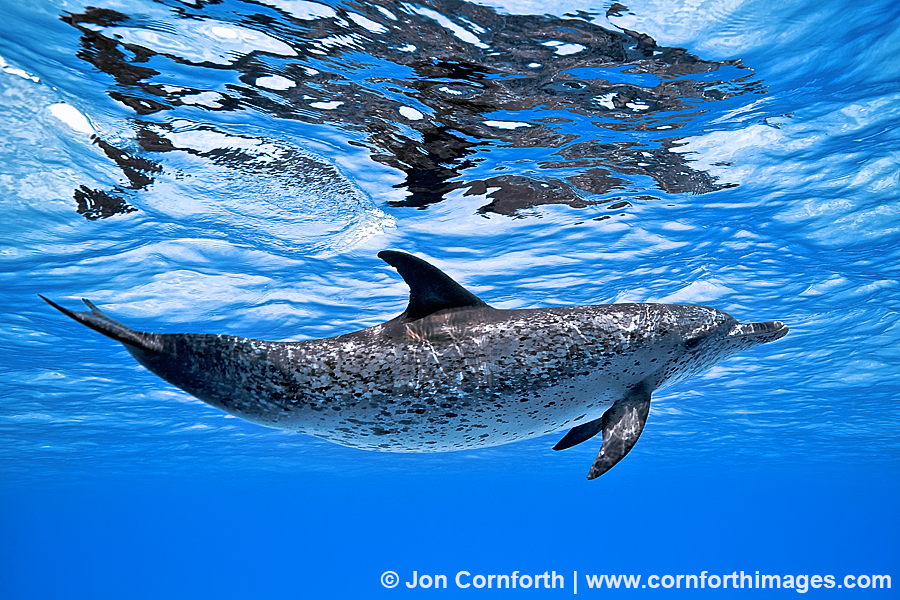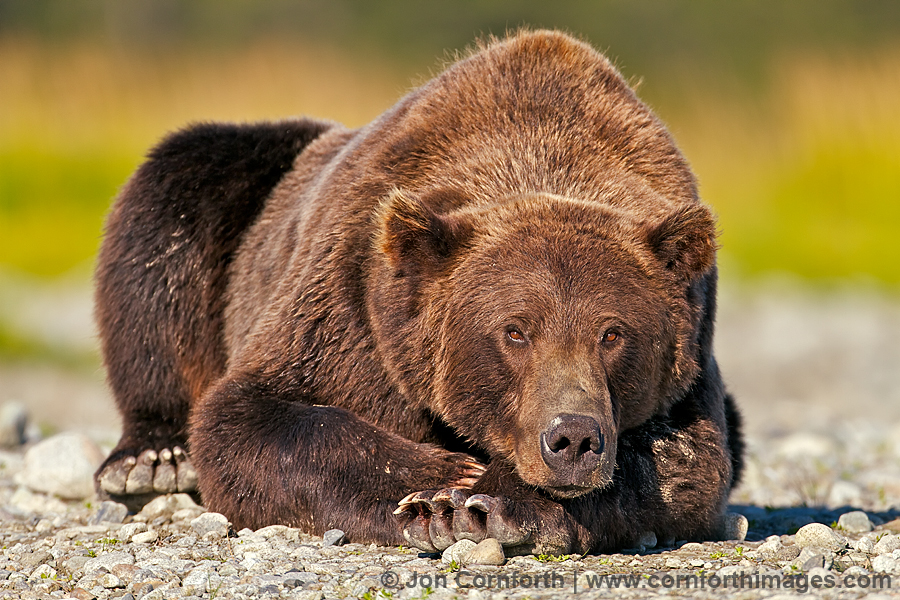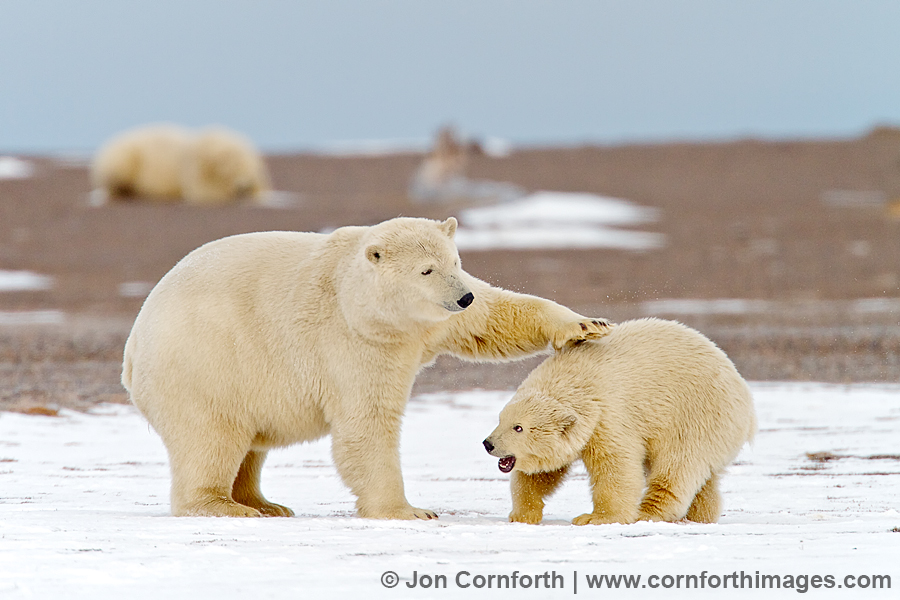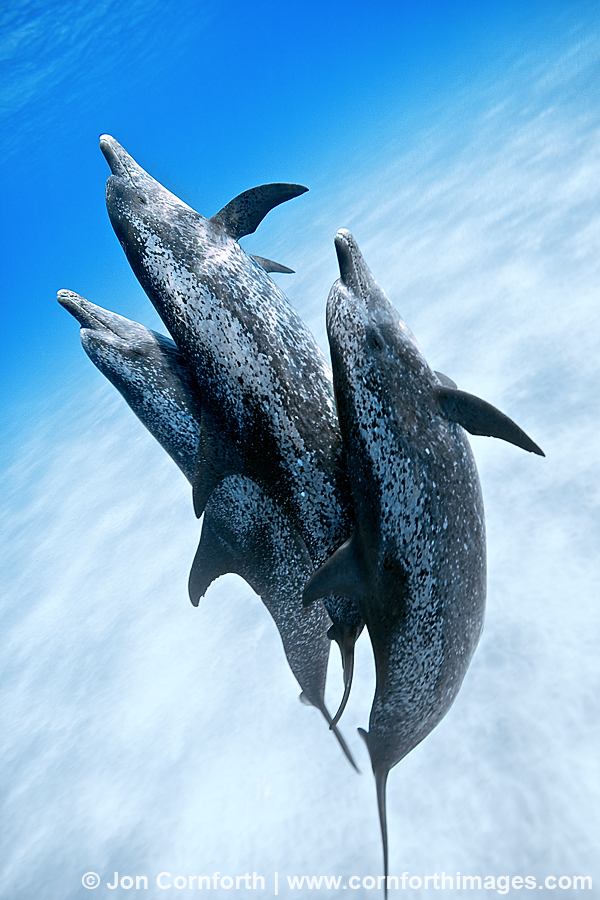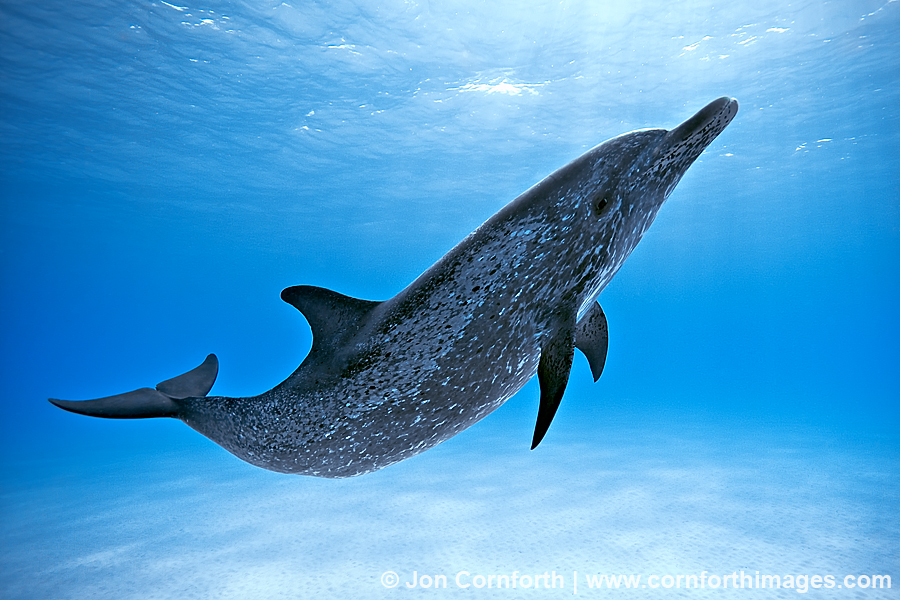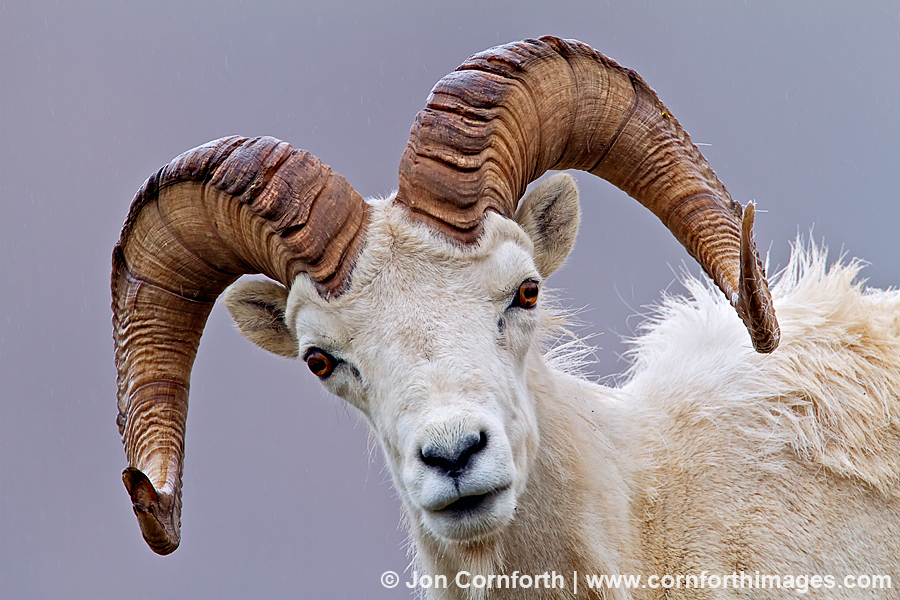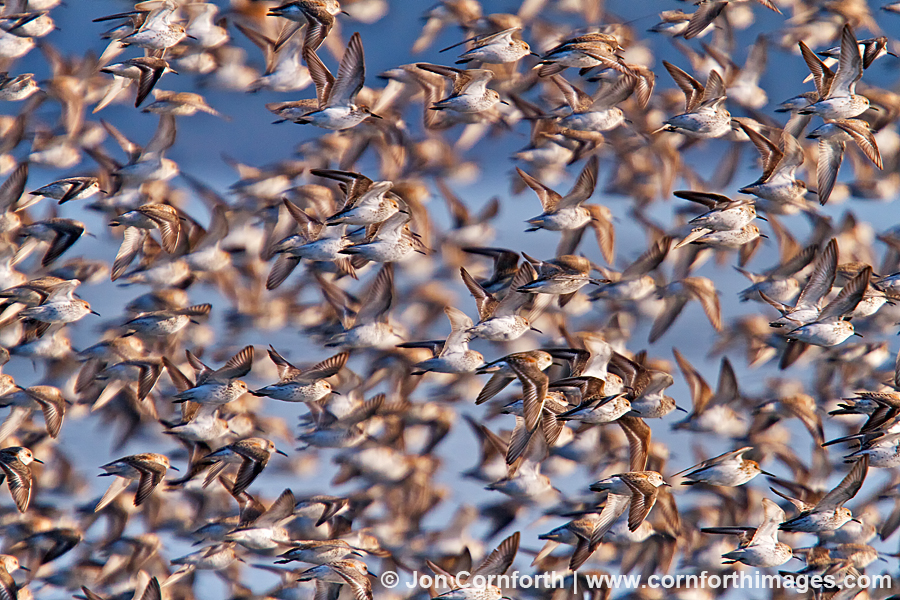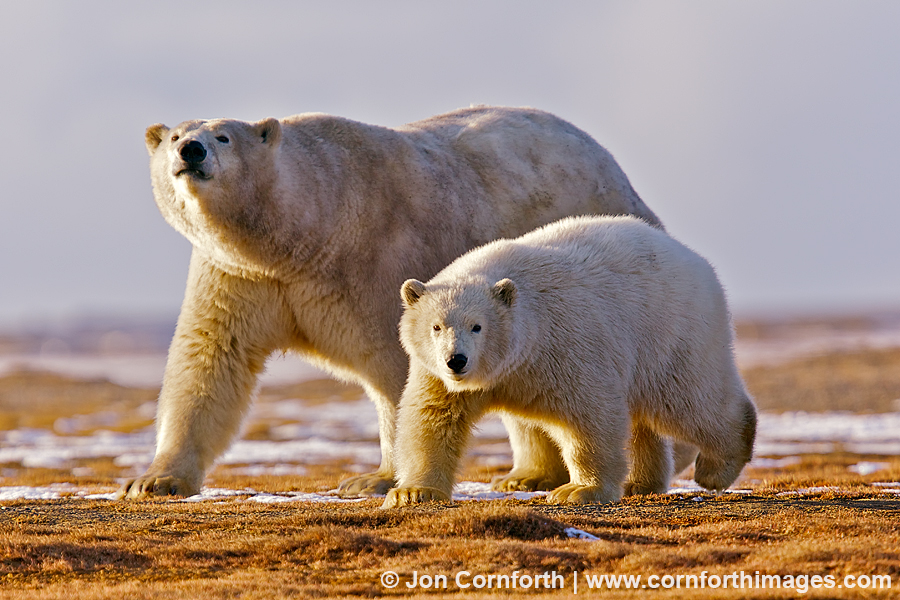
Barter Island Polar Bears 8
Posted onThis is another one of my favorite photos from my recent Polar Bear Photography Tour. I was standing next to the boat with my local Inupiat guide when this mom and cub came over to have a closer look at us. We very quickly got back in the boat, but not before I fired off a few pictures at 10fps with the Canon 1DmkIV that I borrowed from Canon Professional Services. The light was absolutely spectacular and for a moment these bears walked side by side allowing me to create this striking image. I hand-held the camera with my Canon 400mm f4 DO IS lens attached and used a right-angle view finder to get the camera as close to the ground as possible while kneeling. It is a single-exposure which was slightly cropped from the original and required minimal processing using Aperture 3 and Photoshop CS5.

